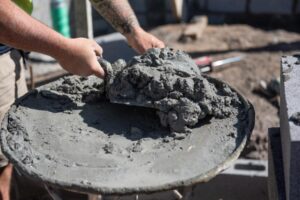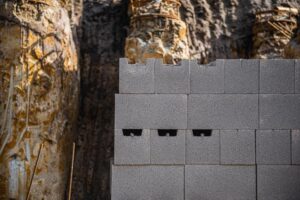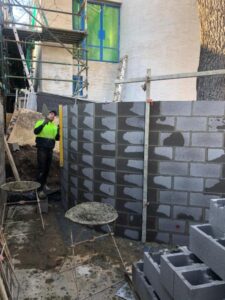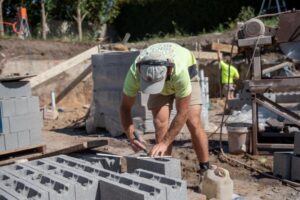You mix mortar for blockwork by using a 6:1:1 ratio; six parts sand, one part cement, one part lime. Then add enough water to get a smooth, workable consistency. Stir thoroughly until it’s free of lumps and easy to spread. A blocklaying specialist knows that the right mortar makes all the difference, holding each block firmly in place.
In this blog, we’ll discuss the standard ratios for mortar types, adjusting them based on weather, and the tools you need for mixing.
Standard Ratios for Different Mortar Types
The following are the standard ratios for different mortar types in Australia:
M1
M1 mortar is the lightest mix, perfect for non-load-bearing walls and low-stress areas. Typically, it’s mixed using one part cement to five parts sand, with a dash of lime to make it easier to work with.
M2
M2 mortar steps up the strength a bit, ideal for general bricklaying in areas that don’t bear heavy loads. You’ll mix one part cement, one part lime, and six parts sand to get a blend that’s more flexible and easier to apply than M1.
M3
M3 mortar is the go-to mix for most building projects, striking a balance between strength and workability. The standard mix ratio is one part cement, one part lime, and eight parts sand.
M4
M4 mortar is a heavy-duty option that is designed for high-stress, structural applications. For this mix, use one part cement to three parts sand, with an optional bit of lime to make it smoother.

Adjusting the Mortar Mix for Weather Conditions
Adjusting the mortar mix for weather conditions is crucial for getting the best results. In summer, the mix can dry out too quickly, weakening the bond. To keep it workable longer, add a bit more water. Keeping the sand and mixing water cool can help, and using a retarder can slow down the setting time.
Wet conditions can dilute the mix, reducing its effectiveness. To counter this, use less water and cover the mortar with waterproof sheeting to keep it dry. Make sure the surface is dry before applying the mortar to improve adhesion.
Adjusting the mortar mix to suit the weather ensures your construction stays strong and durable, whatever the season. A blocklaying specialist always considers these factors to guarantee top-notch results for any project.
Do Ratios Matter When Mixing Mortar for Blockwork?
Yes, ratios matter significantly when mixing mortar for blockwork. The right mix of cement, sand, and water is essential for achieving the perfect blend of strength, workability, and durability.
Sticking to the correct proportions prevents issues like weak bonds, cracking, and poor adhesion, which can compromise the whole structure.
What Tools and Equipment Do I Need to Mix Mortar?
The minimum tools and equipment you need to mix mortar are a mixing container or board, a shovel, a trowel, and a measuring tool for precise ratios. You might also find a wheelbarrow and a mortar board handy for easier mixing and transport.
Having the right equipment for bricklaying and blocklaying ensures you get a smooth, well-mixed mortar that makes your project strong and durable.




